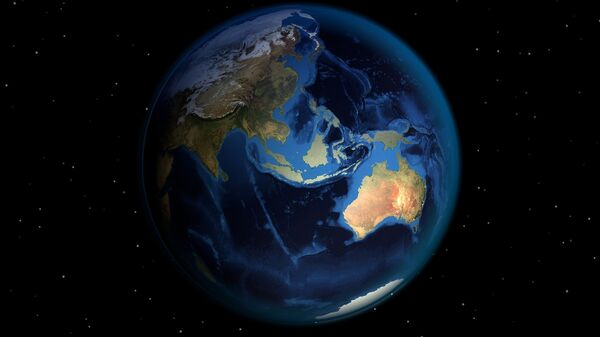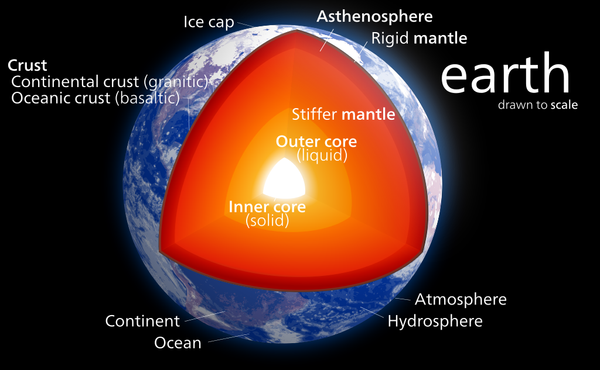A team of scientists has suggested an answer to the mystery of when the tectonic plates of Earth first began moving to help it evolve into what it is today.
The researchers, led by a group of scientists from Harvard, sought clues in ancient rocks from Australia and South Africa.
According to the study, entitled “Paleomagnetic evidence for modern-like plate motion velocities at 3.2 Ga” and published in Science Advances, these plates were moving at least 3.2 billion years ago.
With a #QuantumDiamondMicroscope in #Paleomagnetic studies of #AustralianBasaltRocks, scientists measured the speed #EarthCrust, roughly the same for the last Gigayears. @IanRRose and teams from @Harvard, @Yale, @mtugeomining, @harvardphysics & @UCBerkeleyhttps://t.co/gW4jAIwOTq pic.twitter.com/osTUuwd7yu
— Physics of Magnetism (@PhysMagnetism20) April 27, 2020
This was established after analysis of one of the oldest fragments of the Earth's crust, found in the Pilbra Craton in Western Australia. The data pointed to a latitudinal drift of around 2.5 centimeters annually occurring some 3.2 billion years ago.
The scientists believe this shift is the earliest existing proof that plate motion similar to that witnessed on Earth today took place between two to four billion years ago.
"Basically, this is one piece of geological evidence to extend the record of plate tectonics on Earth farther back in Earth history," said Alec Brenner, one of the paper's lead authors and a member Harvard's Paleomagnetics Lab.
Hailing the research as supporting the theory that tectonic movement occurred on Earth in its early years, the scientist added:
"Based on the evidence we found, it looks like plate tectonics is a much more likely process to have occurred on the early Earth and that argues for an Earth that looks a lot more similar to today's than a lot of people think."
Story Behind a Rock’s Magnetic History
The research began as far back as in 2017, when Fu and Brenner drilled for rock samples from a portion called the Honeyeater Basalt. These were brought back to labs and placed into magnetometers and demagnetizing equipment that shed light on the rock's magnetic history – suggesting it was formed 3.2 billion years ago.
The team then used this information coupled with other research to date when the rocks shifted from one point to another, establishing the annual drift of 2.5 centimeters.
Fu and Brenner used the novel Quantum Diamond Microscope to confirm their findings.
Quantum microscope offers MRI for molecules. Diamond-based imaging system uses magnetic resonance. https://t.co/uIcrantBJl pic.twitter.com/X9u1dZqgnt
— Oceans In Peril (@oceansperil) March 7, 2017
Despite the fact that the time interval of the geological movement established by the study seems to prove their case, the team acknowledge that they cannot exclude the results to be due to a phenomenon called "true polar wander."
This is something that can also cause the Earth's surface to shift.
Plate Tectonics Timeline
When the first shifts first started in plate tectonics - key to the evolution of life and the development of the planet – is an issue that has been long debated in geology.
Today, our planet Earth's outer shell consists of some 15 blocks of crust that continents and oceans sit on.
Overtime, movement of these plates shaped the location of the continents and aided the formation of new ones.
As the process pushed forth landforms like mountain ranges, it also exposed new rocks to the atmosphere. The latter resulted in chemical reactions that brought forward evolution of life, which is possible only in a stable climate – something these processes achieved on the surface of the Earth over billions of years.
"We're trying to understand the geophysical principles that drive the Earth," said Roger Fu, one of the paper's lead authors.
Fu, an assistant professor of earth and planetary sciences in the Faculty of Arts and Science, Harvard University, added:
"Plate tectonics cycles elements that are necessary for life into the Earth and out of it."
The new research could also be instrumental in understanding other worlds, beyond our planet, says Alec Brenner.
"It really behooves us as we search for planets in other solar systems to understand the whole set of processes that led to plate tectonics on Earth… That hopefully would give us a sense of how easy it is for plate tectonics to happen on other worlds, especially given all the linkages between plate tectonics, the evolution of life and the stabilization of climate," said Brenner, a third-year graduate student in the Graduate School of Arts and Sciences.
The two lead authors of the study, Alec Brenner and Roger Fu, are planning to continue studying data from the Pilbara Craton and other samples from around the world in future experiments.





